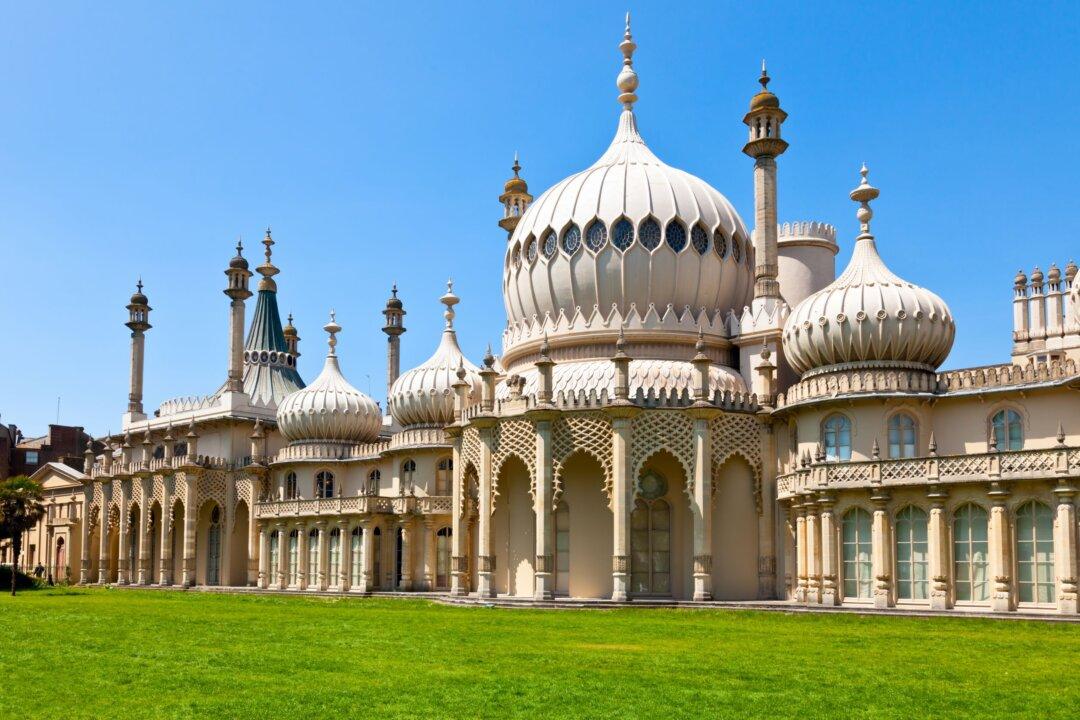There’s nothing quite like the Brighton royal pavilion in the British Isles. Situated at the heart of the seaside city of Brighton, south of London, stands what looks like an Indian palace. It’s the exotic vision of George IV, and its Regency-style architecture is extraordinary.
In the mid-1780s, as prince regent, George rented a lodging house in Brighton. Architect Henry Holland converted the building into a “marine pavilion,” and in 1815, architect John Nash started to transform it into an Asian palace. The prince regent lavishly decorated his seaside residence with imported Chinese wallpapers, furniture, and objects. In 1850, Queen Victoria sold the palace to the city.






